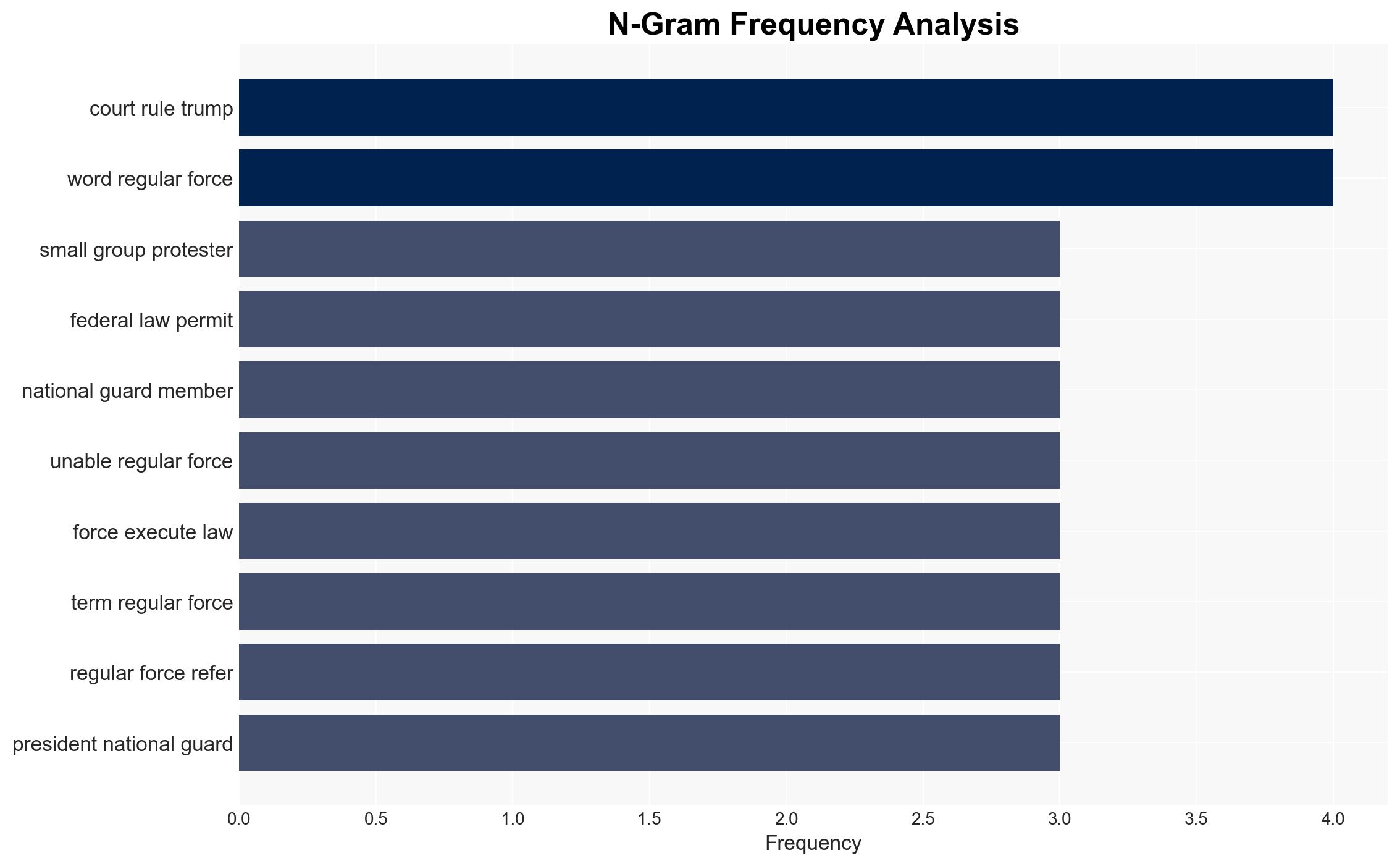The Supreme Court is about to rule on whether Trump can use troops against Americans – Vox
Published on: 2025-11-14
AI-powered OSINT brief from verified open sources. Automated NLP signal extraction with human verification. See our Methodology and Why WorldWideWatchers.
Intelligence Report: The Supreme Court is about to rule on whether Trump can use troops against Americans – Vox
1. BLUF (Bottom Line Up Front)
The Supreme Court’s impending decision on President Trump’s authority to deploy National Guard troops against American protestors presents significant legal and political implications. The most supported hypothesis is that the Court will rule narrowly, avoiding a broad precedent on presidential military authority over domestic protestors. Confidence level: Moderate. Recommended action: Monitor the ruling closely and prepare for potential legal and public reactions.
2. Competing Hypotheses
Hypothesis 1: The Supreme Court will rule narrowly, focusing on the specifics of the Illinois case without setting a broad precedent on the use of military force against domestic protestors. This is supported by the Court’s request for additional briefings and its history of avoiding expansive rulings on contentious issues.
Hypothesis 2: The Supreme Court will issue a broad ruling affirming or denying the President’s authority to deploy military forces domestically, potentially reshaping the legal landscape for future administrations. This is less likely given the Court’s cautious approach and the complexity of the legal issues involved.
3. Key Assumptions and Red Flags
Assumptions: The Court will prioritize legal precedent and institutional integrity over political considerations. The decision will be influenced by the justices’ interpretations of federal statutes and constitutional provisions.
Red Flags: Potential bias in the Court’s decision-making due to the political affiliations of the justices. The possibility of public misinterpretation or manipulation of the ruling for political gain.
4. Implications and Strategic Risks
A narrow ruling could lead to continued legal ambiguity and future challenges regarding presidential authority over domestic military deployment. A broad ruling could escalate political tensions and set a precedent affecting civil liberties and executive power. There is a risk of public unrest or misinformation campaigns exploiting the decision, potentially impacting national security and public trust in government institutions.
5. Recommendations and Outlook
- Actionable Steps: Prepare legal and communication strategies to address various ruling outcomes. Engage with stakeholders to clarify the implications of the decision.
- Best Scenario: A narrow ruling that maintains legal clarity and minimizes political fallout.
- Worst Scenario: A broad ruling that exacerbates political divisions and undermines civil liberties.
- Most-likely Scenario: A cautious, narrow ruling that avoids setting a broad precedent.
6. Key Individuals and Entities
Donald Trump, Supreme Court Justices, Justice April Perry (Federal District Judge).
7. Thematic Tags
Structured Analytic Techniques Applied
- Cognitive Bias Stress Test: Expose and correct potential biases in assessments through red-teaming and structured challenge.
- Bayesian Scenario Modeling: Use probabilistic forecasting for conflict trajectories or escalation likelihood.
- Network Influence Mapping: Map relationships between state and non-state actors for impact estimation.
Explore more:
National Security Threats Briefs ·
Daily Summary ·
Support us
·





